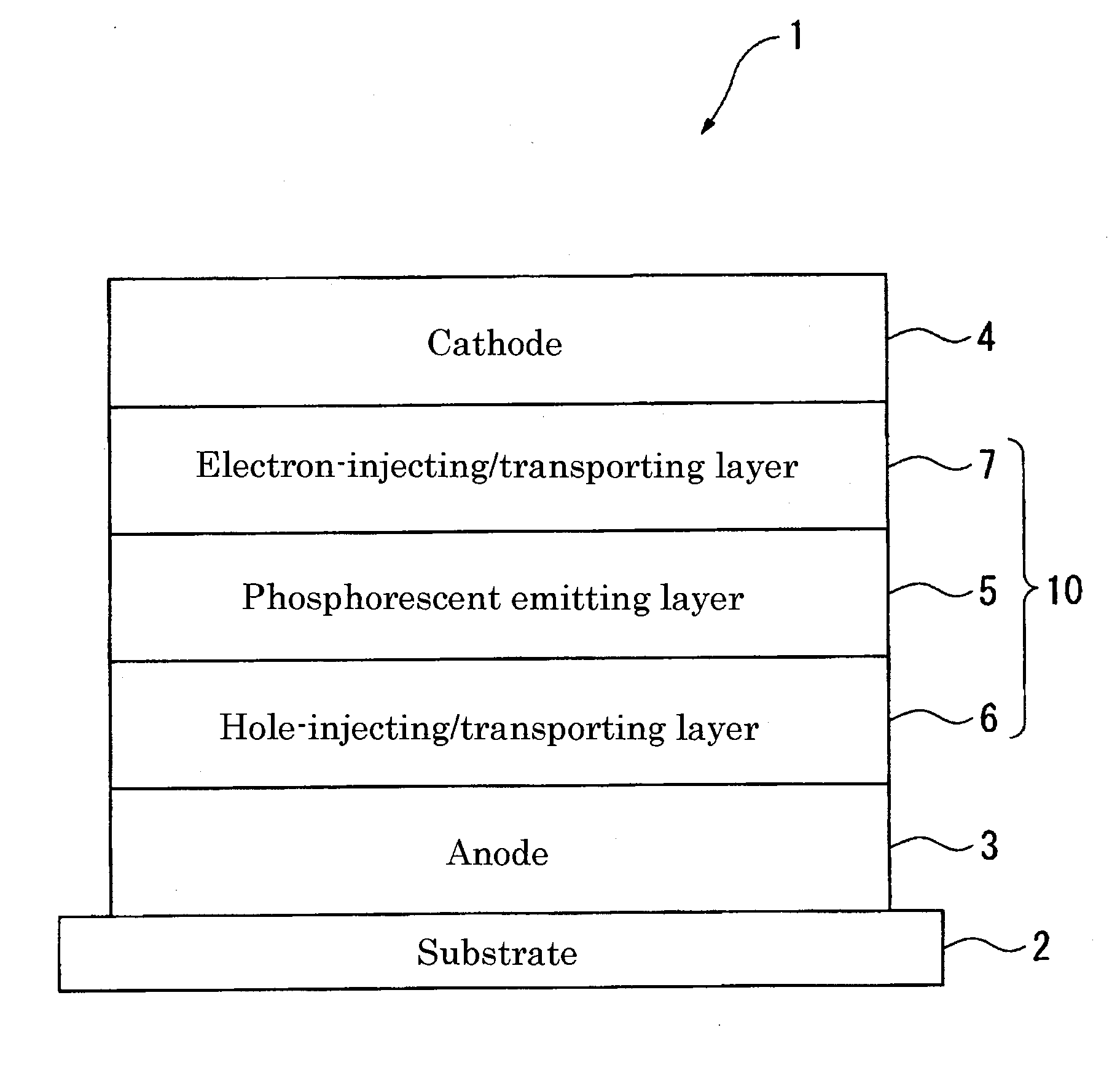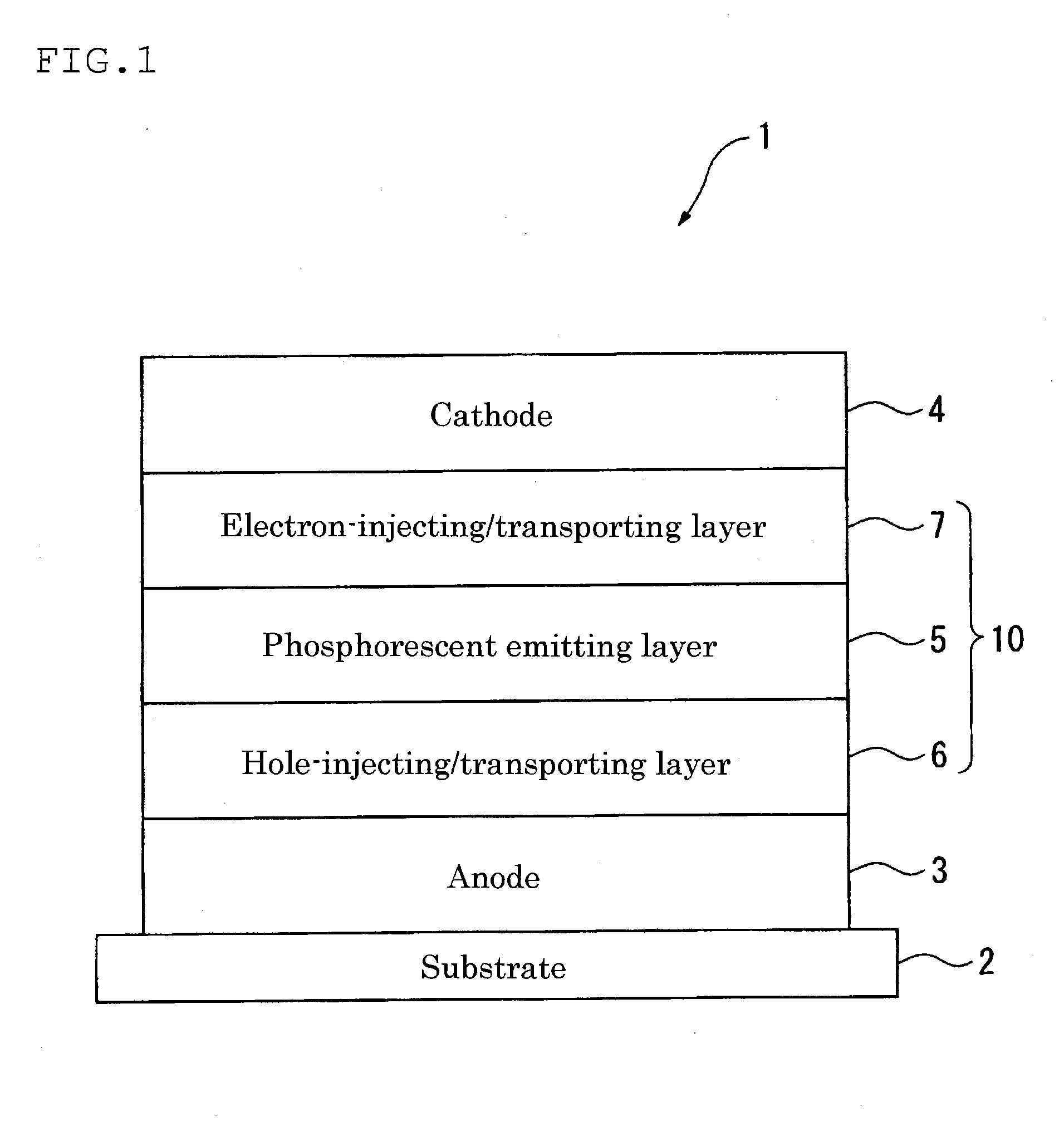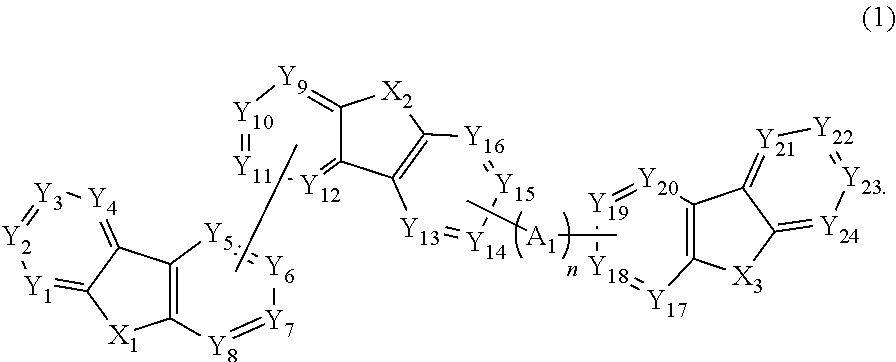Fused heterocyclic aromatic derivative, organic electroluminescence element material, and organic electroluminescence element using same
- Summary
- Abstract
- Description
- Claims
- Application Information
AI Technical Summary
Benefits of technology
Problems solved by technology
Method used
Image
Examples
synthesis example 1
Synthesis of Compound (1)
(1) Synthesis of Compound (1-a)
[0233]
[0234]In a three-neck flask, 269.1 g (1600 mmol) of dibenzofuran and 1280 mL of dichloromethane were placed. The reactor was cooled to 0° C. in a nitrogen atmosphere. 100 mL of a dichloromethane solution of 204.6 g of bromine was added dropwise to the reactor over 40 minutes, and the resulting mixture was stirred at room temperature for 12 hours. After completion of the reaction, the reactor was cooled to 0° C. 500 mL of water was added, and further, 100 mL of an aqueous 20% NaHSO4 solution was added. The sample solution was transferred to a separating funnel, and extracted with dichloromethane several times. The resultant was washed with 300 mL of a 1N aqueous solution of sodium hydroxide, dried with anhydrous magnesium sulfate, filtrated and concentrated. The resulting product was washed by dispersing in hexane, whereby white solids were obtained. The yield was 136 g (55%).
(2) Synthesis of Compound (1-b)
[0235]
[0236]In a...
synthesis example 2
Synthesis of Compound (81)
(1) Synthesis of Compound (81-a)
[0245]
[0246]In a three-neck flask, 15.0 g (81.4 mmol) of dibenzothiophene and 90 mL of chloroform were placed. The reactor was cooled to 0° C. in a nitrogen atmosphere. 20 mL of a dichloromethane solution of 13.1 g of bromine was added dropwise to the reactor over 15 minutes, and the resulting mixture was stirred at room temperature for 12 hours. After completion of the reaction, the reactor was cooled to 0° C. 100 mL of water was added, and further, 30 mL of an aqueous 20% NaHSO4 solution was added. The sample solution was transferred to a separating funnel, and extracted with dichloromethane several times. The resultant was washed with 30 mL of a 1N aqueous solution of sodium hydroxide, dried with anhydrous magnesium sulfate, filtrated and concentrated. The resulting product was washed by dispersing in hexane and methanol, whereby white solids were obtained. The yield was 10.7 g (50%).
(2) Synthesis of Compound (81-b)
[0247]
[...
synthesis example 3
Synthesis of Compound (17)
(1) Synthesis of Compound (17-a)
[0255]
[0256]In a three-neck flask, 100.1 g (57.5 mmol) of 2-bronco-3-hydroxypyridine, 88.5 g (032.5 mmol) of 2-fluorophenylboronic acid, 88.5 g (2300 mmol) of potassium carbonate, 1150 mL of N,N-dimethylacetoamide, and 13.3 g (11.5 mmol) of Pd(PPh3)4 were placed, and the resulting mixture was refluxed in a nitrogen atmosphere at 90° C. for 12 hours in a nitrogen atmosphere. Thereafter, the mixture was stirred with heating at 160° C. for 8 hours.
[0257]After completion of the reaction, the sample solution was cooled to room temperature. 1 L of toluene and 1 L of water were added to the sample solution, and the resultant was transferred to a separating funnel and shaken sufficiently. A toluene phase was collected, and extraction from an aqueous phase was conducted with toluene several times. This toluene solution was further washed with water several times, dried with anhydrous magnesium sulfate, passed through a silica gel shor...
PUM
 Login to View More
Login to View More Abstract
Description
Claims
Application Information
 Login to View More
Login to View More - R&D
- Intellectual Property
- Life Sciences
- Materials
- Tech Scout
- Unparalleled Data Quality
- Higher Quality Content
- 60% Fewer Hallucinations
Browse by: Latest US Patents, China's latest patents, Technical Efficacy Thesaurus, Application Domain, Technology Topic, Popular Technical Reports.
© 2025 PatSnap. All rights reserved.Legal|Privacy policy|Modern Slavery Act Transparency Statement|Sitemap|About US| Contact US: help@patsnap.com



